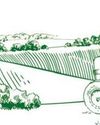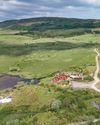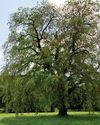
FOR the first time, the UK is home to more than 1,000 vineyards-and counting. Hampshire, Kent, Sussex and Surrey are positively awash with acres under vine, after an increase in temperatures over the past decade ramped things up for an industry that had historically fallen somewhat flat.
From as early as 43BC, wine-loving Romans, Catholics and Normans established vineyards on these shores-indeed, the Domesday Book of 1086 recorded 42 vineyards in England, 12 of which were attached to monasteries. However, these efforts were scuppered by powerful adversaries such as Vikings, the Black Death, imports and the great British weather.
English wine as we know it was born again after the World Wars, when 'founding father' Ray Barrington Brock trialled more than 600 varieties in Surrey, forming a selection that still informs winemaking in this country today; this was followed by the publication of pioneer George Ordish's book Wine Growing in England in 1953. In 1952, Maj-Gen Sir Guy Salisbury-Jones planted the first commercial vineyard (Seyval Blanc) at Hambledon in Hampshire -and the rest is history.
This story is from the {{IssueName}} edition of {{MagazineName}}.
Start your 7-day Magzter GOLD free trial to access thousands of curated premium stories, and 9,000+ magazines and newspapers.
Already a subscriber ? Sign In
This story is from the {{IssueName}} edition of {{MagazineName}}.
Start your 7-day Magzter GOLD free trial to access thousands of curated premium stories, and 9,000+ magazines and newspapers.
Already a subscriber? Sign In

A leap in the dark
The primal play of light and shadow, whether in Leonardo's ever-so-subtle sfumato or Caravaggio's dramatic contrasts, has shaped Western art, as Michael Hall reveals

Beauty and the blimp
Inflammable airships may be gone, but a new hybrid aircraft, capable of delivering eco-friendly aviation, is set to take to the skies with a bang, finds Charles Harris

Three wishes for food and farming
Royal hedge planting, the terrible toll on Ukrainian farming and a maiden speech

Seeing the wood for the trees
Scotland's much-evolved forestry industry has become a focus for clever investors

Let's fall in love
Birds do it, bees do it, even educated fleas do it. Laura Parker finds that, when it comes to creatures mating for life, persistence, patience and a little dad dancing are key to success

Back from the dead
THREE Wentworth elm saplings have been planted in the grounds of the Palace of Holyroodhouse, Edinburgh, and on the Highgrove estate in Gloucestershire-29 years after what was thought to be the lastknown Wentworth elm died.

A man among men
What makes a master? Beloved of the commercial art world, handled warily by art historians, the word has long been opaque. Michael Prodger investigates its many meanings-and discovers that being male confers an unfair advantage

Unearth one of life's luxuries
Black diamonds are a girl's best friend this Valentine's Day, with Périgord truffle-based skincare from TRUFFE

Adventure awaits
Spend an unforgettable family holiday on the Benmore Estate and experience some of Scotland's finest wildlife and sporting activities

Let the art rule the head
Despite being a world leader in everything from jewellery to fashion and music, the UK is failing to nurture creativity at school and in regional centres. Tristram Hunt, director of the V&A Museum, calls for an urgent review